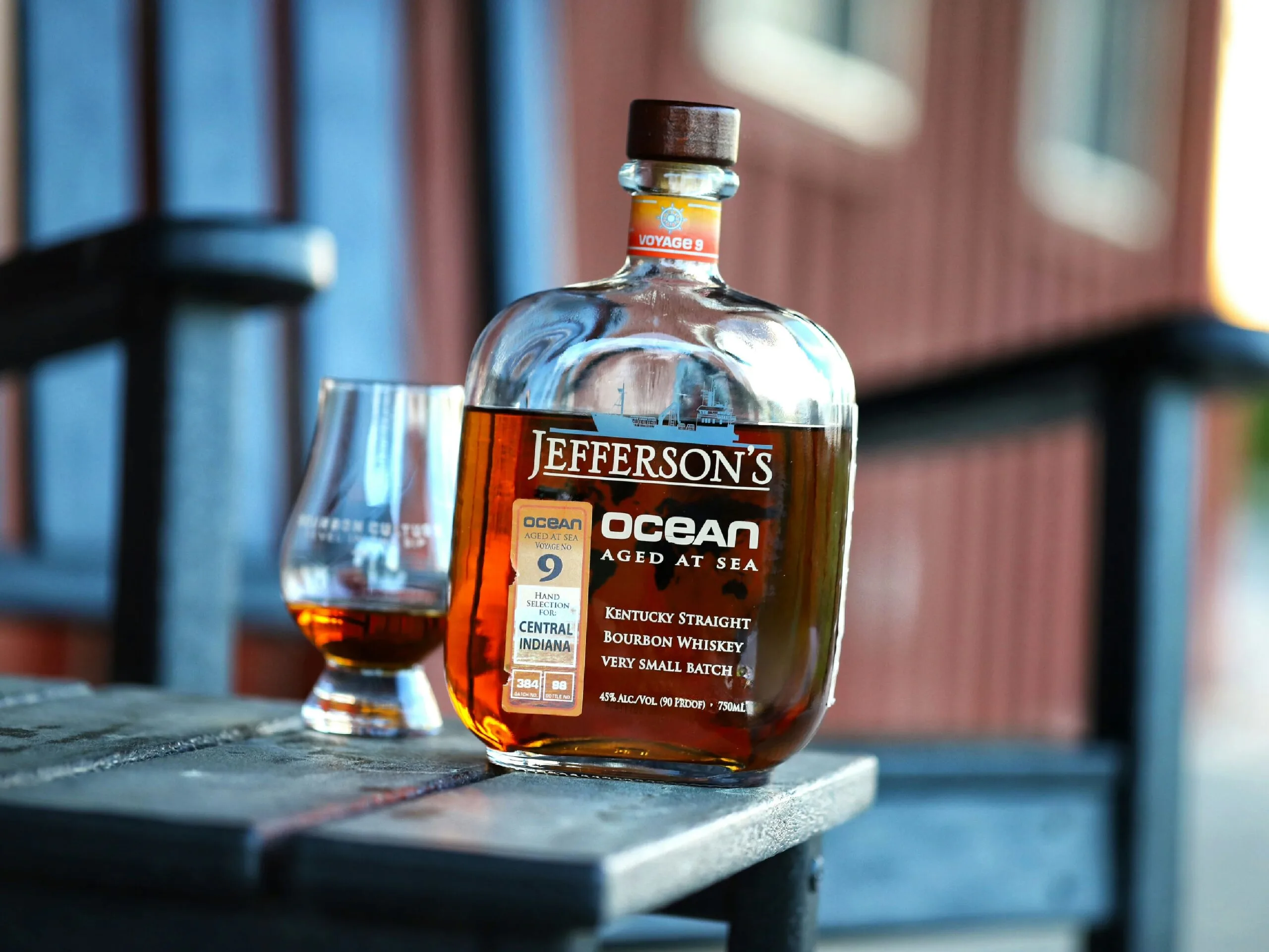| Don't like ads? | No ads |
Due to the uptick in fanfare from our readers regarding our observations of the newly announced Jefferson’s Tropics (see our thoughts here), I figured I’d expand a little bit more on what makes Jefferson’s Ocean unique before I get into my theory on where it gets that hint of salt from.
Many of you have probably heard of (or bought a bottle of) Jefferson’s Ocean by now. In fact, in 2021, it was the best selling bourbon brand over $70 in the United States (I would’ve thought it was a Barrell Bourbon product).
This is because the concept of putting whiskey barrels onto a ship that sails around the world is easy to romanticize. It’s the perfect marketing strategy and it’s paying off bigtime.
What makes Jefferson’s Ocean different from other bourbons?
What makes Ocean different from other bourbons is that barrels stored in a regular warehouse have to wait for the weather to come to them – but Jefferson’s barrels are mobile and can go to wherever the weather is.
Bourbon needs that hot/cold interaction to push the liquid through the layer of barrel char, into the oak and then have it pulled back out again. It’s essentially filtering itself using the receptacle that holds it. Regardless of what whiskey makers like Cleveland or Terrepure try to tell you, there is no man-made method that can do it better.
What does aging whiskey at sea do?
I think Jefferson’s over-exaggerates the voyage’s maturation abilities a bit. I have no doubt that the ever-changing temperature fluctuations help (of note, each batch of Ocean tells you a lot of info about the temperature fluctuations on the hang-tag), but I think that 30 days or so isn’t enough.
The barrels would need to see a lot more time on the sea to be truly different. The bourbon Jefferson’s uses, by the way, is almost certainly from Barton and is probably aged about 5 years before being put on a voyage.
So if you wonder why your Jefferson’s Ocean tastes similar to 1792 Small Batch or Calumet Farm Black Rack, now you know. By the time the voyage is done, it probably adds up – in terms of flavor – to about a year of additional aging.
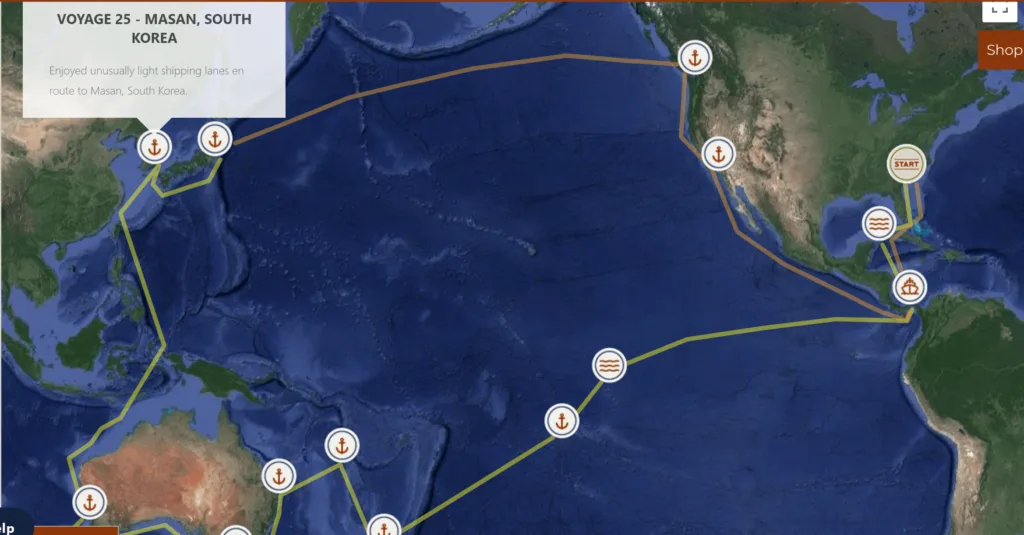
Aging barrels inside of a shipping container is nothing new either. Many distilleries do this around the United States, but the differences are they are mostly very small craft operations and they don’t put them on ships.
I think the largest distillery to use shipping containers to age barrels is Limestone Branch Distillery, makers of Yellowstone and Minor Case whiskies (ironically Yellowstone SiBs are Barton just like Jefferson’s).
I’m not saying that all of their whiskey is aged in shipping containers, but they do have them on premises. These shipping containers are fitted with simple lumber pieces to roll the barrels into on their side (aka ricked). This picture, taken from Limestone Branch’s Trip Advisor page, shows one of those containers in use.
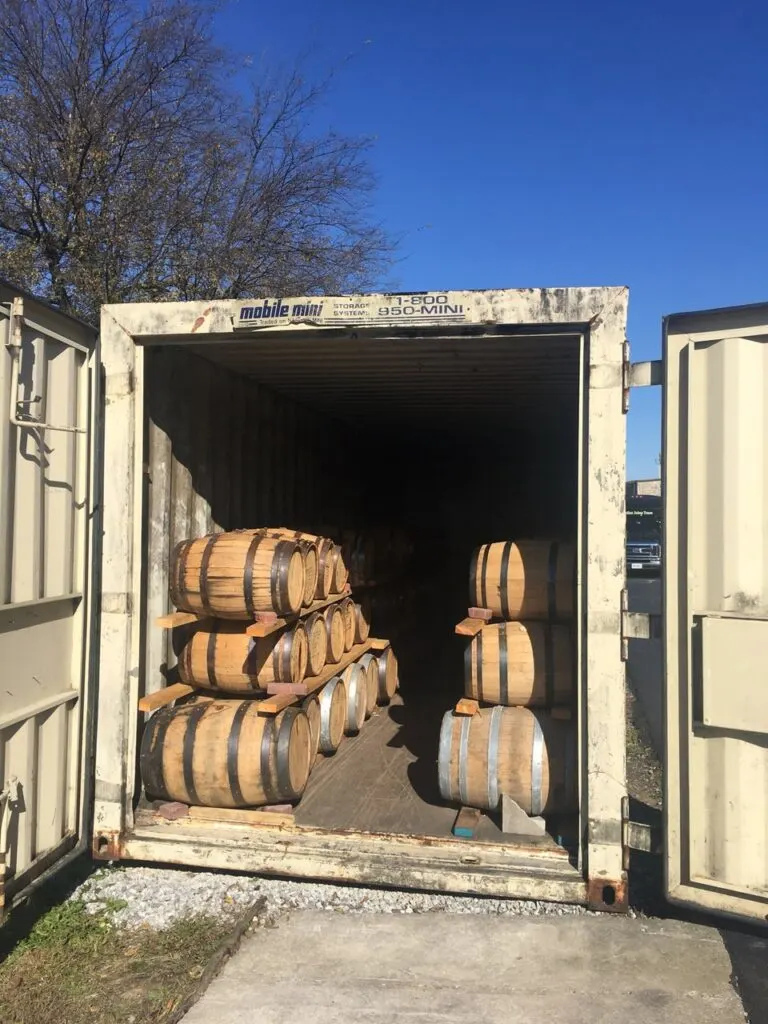
Jefferson’s knew that keeping the barrels on their side during a sea voyage might be a recipe for disaster. As the ship moves with the natural waves of the sea and possibly through storms, there is a lot of movement that can go on.
Those 400-500 pound barrel are strong, but it would be money down the drain if the barrel got damaged and the whiskey leaked out. Also, the container doors or walls could get damaged too if barrels kept ramming into them.
How are the whiskey barrels shipped?
So Jefferson’s palletized them standing up. In this picture provided by Jeffersons (shown below), you can see how they are stacked. They also have blocking and bracing material used between each pallet to prevent a sort of “avalanche” effect.
The white bags between the barrels and the walls are probably filled with some sort of hard material and ensures the pallets won’t slide around. This method of stacking the barrels decreases the number of barrels they can store in each container but it’s better to be safe than sorry.
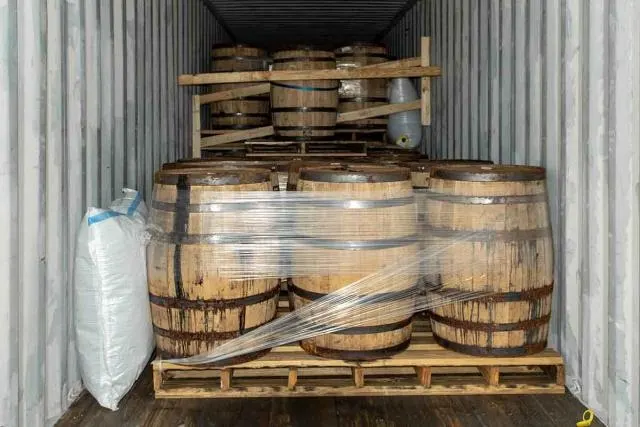
Recently, the picture shown below was posted on the internet showing Jefferson’s using an open-top container to age their barrels in. This “convertible container,” if you will, won’t trap heat in like a traditional one, but it will allow faster fluctuations of liquid temperature on the inside.
Aging Bourbon Barrels in the Open Air
Direct sunlight should heat them up quickly while breezy nights on the sea will rapidly cool them down. This concept of aging bourbon barrels in the open air and direct sunlight is not entirely unique to Jefferson’s either.
Buffalo Trace did it with their EH Taylor “Tornado Survivor” bourbon. That release was the result of a tornado ripping the roof off of the top of Warehouse C, leaving the top barrels exposed to direct sunlight for a period of time.
Buffalo Trace thought it did enough to the bourbon barrels that it made it into a special release. Regardless, I do not believe that Jefferson’s has ever told us which voyages use which containers, but this would be great information to know.
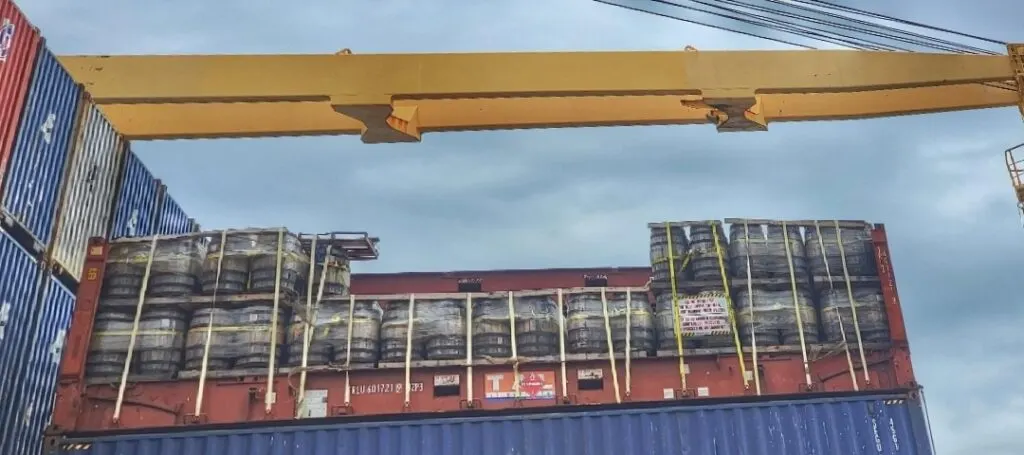
What does Jefferson’s Ocean taste like?
Jefferson’s also likes to say that the whiskey that was aged on these voyages tend to have a degree of salinity or brininess to the flavor of the whiskey. They make it seem as if the salt from either the ocean spray or the sea air finds its way into the barrel.
I can confirm that I taste this as well (albeit very slightly) but I have my doubts as to how the flavor got there. Salt shouldn’t be able to penetrate the oak in such a short period of time and go in the opposite direction that the water and alcohol vapors that are trying to escape.
My theory is that the hint of salt we taste in Jefferson’s Ocean actually comes from the sea mist or sea air leaving tiny deposits on the rough wooden exterior of the barrel. Then when it’s time to dump the barrels and batch them up, some of that falls into the trough or vat.
Some of it also might be “washed” off of the outside surface of the barrel when the liquid starts pouring out of the bunghole (see the picture below to see that barrel dumping is messy). It’s not enough for the TTB or FDA to call it an “additive” since it is just part of the process of dumping barrels, but I think it’s enough to add a bit of briny flavor to the bourbon.
If you’ve ever witnessed the act of dumping barrels, you’ll see that it’s not done in a particularly clean or sanitary way. Oh, and just to cover my bases, I think that some Scotch gets its briny taste in the same way.
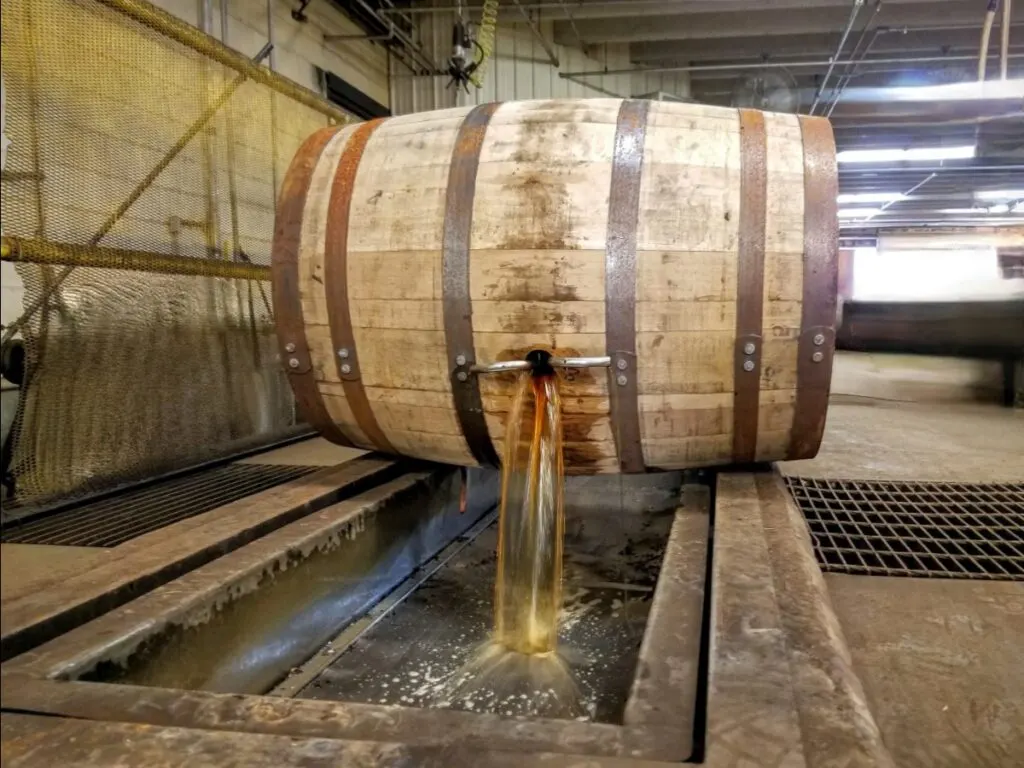
Jefferson’s Ocean is still a tasty bourbon that has a lot going for it. Altogether, it’s a unique product that I would recommend to most people out there.
One of the secrets to its success is that it has built an incredible story around a bourbon that started its life as something very average. And more than just being a story you hear about, they’ve made it into a story you can actually follow along with.
Each bottle is like holding a chapter to that story and each sip reads it out loud to you. I predict more surprises for this label over the next few years. But until then, credit must be given to the company who has truly brought innovation to an industry that isn’t known for taking big risks. Here’s to more of those risks showing up in the future!
Featured Products
- Neat Traveler

- View Larger
- Description:The Aged & Ore Neat Traveler is a complete travel kit for spirits. We combined our widely praised Neat Glass with one of our 3oz Flight Bottles and housed them together in a custom EVA travel case. Perfect for a night away with your favorite pour. The tie
- Bottle Flight

- View Larger
- Description:The Aged & Ore Bottle Flight is a premium set of 4 custom silicone wrapped glass bottles designed to transport and share samples of your favorite spirits. The flight bottles come in a custom EVA travel case that fits perfectly in any small bag. An Aged &
- Travel Bundle
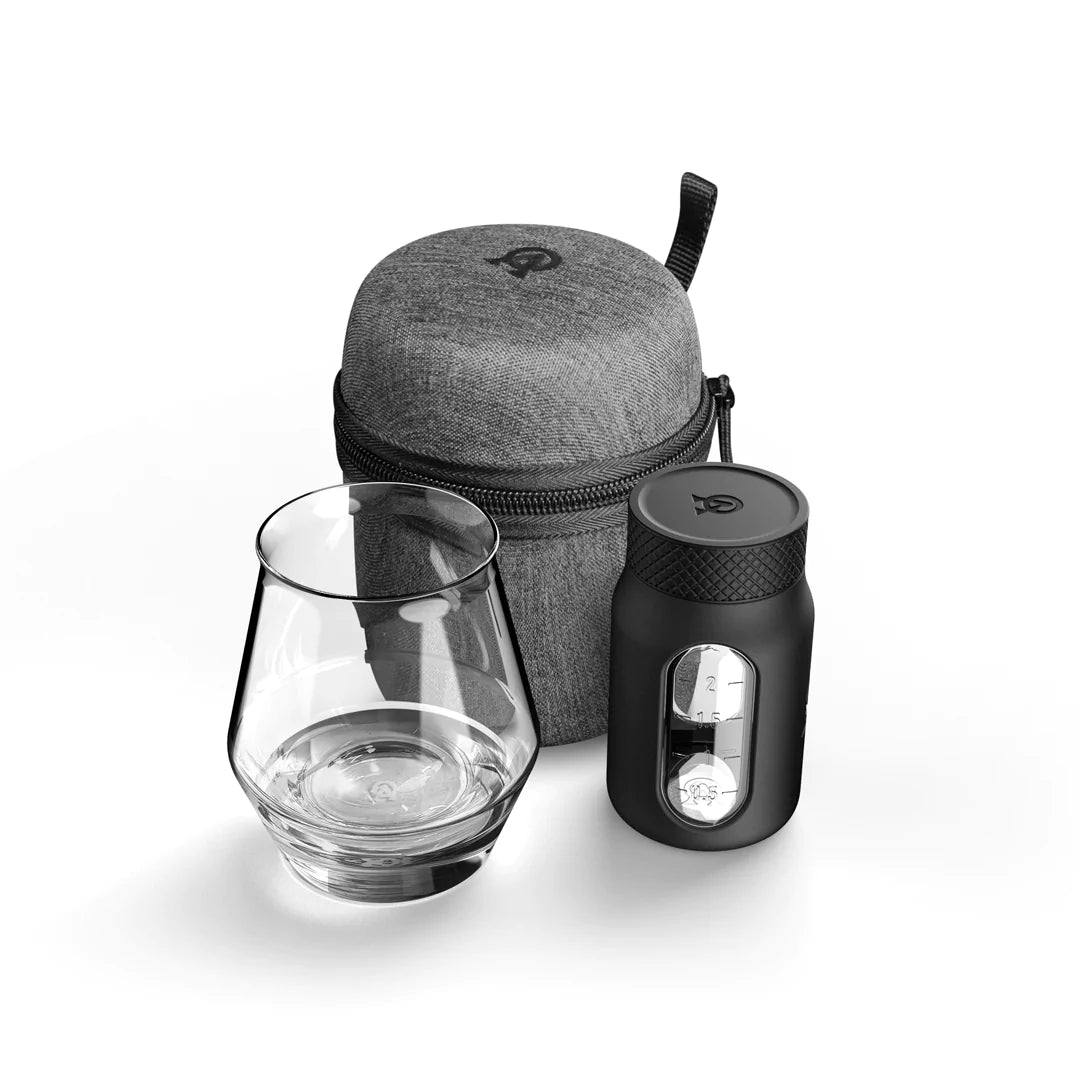
- View Larger
- Description:This Bundle combines two of our crowd favorite products, creating the ultimate travel bundle to bring along your favorite spirits and glassware. Bundle Includes: Neat Traveler (Gray) Bottle Flight (Gray) Note: This bundle is only available in gray and col
*Bourbon Culture is reader-supported. When you buy through links on our site, we may earn an affiliate commission.

